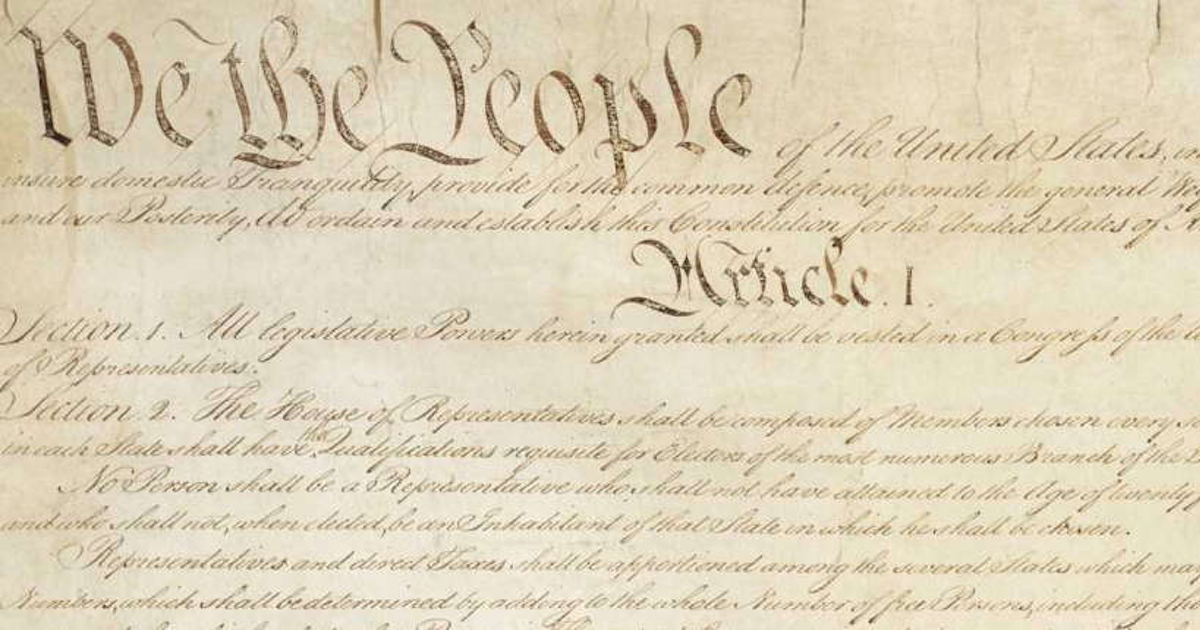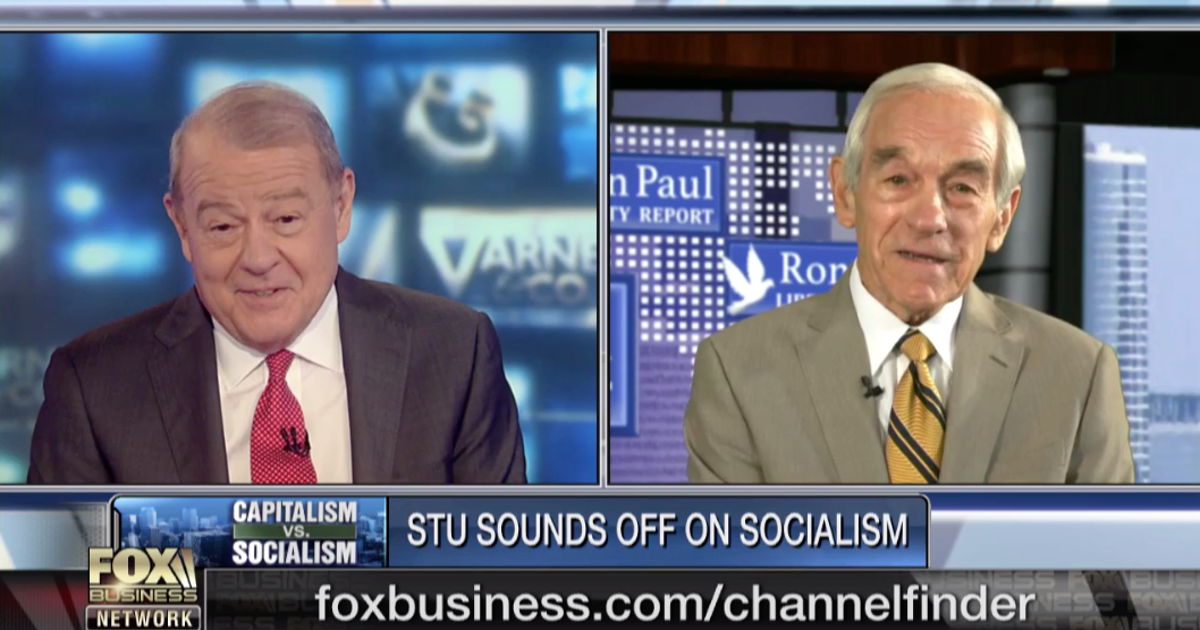|
By Chris Rossini
America's monetary system is a government-created disaster. The Federal Reserve System is in fact a "system," and it was erected by an Act of Congress in 1913. This crony arrangement between politicians and bankers lies at the root of most (if not all) of America's major problems. Unfortunately, with political pressures being what they are, politicians will not address the Federal Reserve System until economic reality forces them to. Politicians will not "End The Fed" until they have no other choice. With that being the case, we must deal with the situation as it is, and with a "system" that creates a lot of economic suffering, especially for the poor. It is the poor who bear the brunt of inflation. In other words, when the Fed prints new money, all existing money that people have in their wallets and purses loses value. People (especially the poor) suffer the consequences with rising bills and prices at the retail stores. Politicians then come in to capitalize on the situation with their good intentions and legislative band-aids. In other words, the politicians proceed to kick the poor while they're down. The fan favorite is for the politicians to raise the minimum wage in order to "help." But this only ends up outlawing jobs for the poor and low-skilled. If the minimum wage is $15/hr., all people without the productivity and skills to earn $15/hr. will be forced into unemployment. A businessperson will not (and cannot) lose money in hiring people. Even if a person would be more than happy to work for $10/hr, and an employer would gladly pay it, the government forbids the voluntary arrangement from ever taking place. While the minimum wage is the go-to and feel-good government intervention, it is far from the only one. Government gets a lot of kicks in when it comes to making life more miserable for the poor. A new proposal to "help" the poor is now being floated, and that's the idea that government should cap the rate of interest that banks charge on credit cards at 15%. (Politicians seem to have a thing for the number 15). People who are a high credit risk naturally have to pay a high rate of interest in order to get a loan. Bankers don't want to lose money anymore than anyone else. So if you're a high credit risk, the interest rate for the loan will be high as well. At least the loan is available to people who are a high credit risk. If you're in dire straits and can only get a loan at 20% interest, at least the bankers are there to provide it to you. But if government caps the rate at 15%, you're out of luck. You can thank the caring politicians for forcing you to remain in your dire straits. Now you can't get a loan at all. Who do you think will benefit the most from a 15% cap? Well, if drug dealers benefitted the most from the government's "drug war," who would benefit from a government "war" on high interest rate loans? Black market loan sharks! Now people in dire straits will have to get their 20% loan from the dark alley. Here's something very important to consider: What happens if you're unable to pay back a 20% loan to a bank? Will the bank come and break your leg? No, it will not. But will the guy from the dark alley break your leg if you don't pay him back? The guy from the dark alley can't take you to court. The loan that he made to you was illegal. So he has to be his own enforcer, and he will most likely enforce with violence. Will a 15% cap cause an increase in broken legs at the hospitals? It wouldn't be surprising if it does. These are the consequences that politicians keep creating. They move from creating one disaster after another. Their good intentions always hurt the very people that they say they are helping. Politicians can't help anyone with force. It always backfires, whether it be in ways that are seen or are unseen, and whether the backfire happens now or later. The backfire cannot be avoided.
Incoming US Defense Secretary Shanahan has informed us that Iran's nefarious intentions toward the US and its allies in the region have been put on hold thanks to the deployment of a US carrier strike group and a handful of B-52s to the region. Details about the original threat, claimed by Bolton, Pompeo, and others, have not been revealed. We are expected to take the neocons' word for it that there actually was a threat and that they defeated it.
By Vicki E. Alger
There’s no such thing as a free lunch, or free college. But that reality hasn’t stopped Democratic presidential hopeful Sen. Elizabeth Warren of Massachusetts from touting her trillion-dollar-plus plan. Step one of her plan would cancel most or all of the student loan debt carried by nearly 45 million Americans, up to $50,000 per person as long as their household incomes don’t exceed $250,000. This step alone would result in a one-time cost of $640 billion. Step two is ensuring students don’t accumulate loan debt ever again by making college “free” like K-12 public schools. Officially dubbed the Universal Free College program, the estimated cost of this part of her plan is a jaw-dropping $1.25 trillion over the next 10 years. But never fear: Warren will pay for it by imposing an Ultra-Millionaire Tax on the rich. There are several flaws in Warren’s free college scheme, starting with the fiction that her proposed tax on “ultra-millionaires” will actually raise enough money to pay for it. For example, most European countries have ditched their wealth taxes in large part because they generated so little revenue. So, when the free-college coffers come up short, average taxpayers will be stuck making up the balance—a very real possibility, especially since Warren also has vowed to bankroll her $70 billion-a-year “free” Universal Child Care and Early Learning plan with the same Ultra-Millionaire Tax. One of the worst elements of Warren’s plan is that college degrees will become about as meaningless as many of today’s high school diplomas. Americans already spend an average of more than $13,000 per pupil, per year, for every public elementary and secondary school student—almost as much as they spend for each student at public two-year colleges. That kind of money should buy a top-notch education. Yet nearly 75 percent of high school graduates are not deemed college-ready in English, reading, math and science. If history teaches us anything it’s that we can’t subsidize our way to college affordability. The federal government’s reach into higher education has grown steadily over the past 60 years—and with it college inflation rates, which are about twice as high as general inflation rates. As a result, average tuition and required fees at public two- and four-year institutions have increased by more than 300% since 1963. Contrary to what Senator Warren claims, the cause of these skyrocketing increases is too much government funding, not too little. Read the rest of this article at The Independent Institute
By Bradley Thomas
Most of the attention on Bernie Sanders’ proposed “Medicare for All” plan has focused on the financial costs of its implementation. This is understandable, given that some estimates project costs to exceed $32 trillion over its first ten years, and that Medicare is already suffering massive losses – more than $130 billion since 2008 – along with facing unfunded liabilities in excess of $30 trillion. But what about the non-financial costs like doctor shortages, foregone treatment due to lack of access to care and tens of thousands of deaths due to overly aggressive care? Will Supply Meet Demand? Basic economics, and common sense, tells us that when the marginal cost to the consumer for a good or service at the point of sale is reduced to zero, demand will increase significantly. Under Sanders’ Medicare for All plan, there will be no payment made by patients when they receive treatment. Medical care consumers will no doubt make more frequent visits to doctors, specialists and emergencies rooms – often times for unnecessary treatments – because, after all, it won’t cost them anything. Moreover, because people will be taxed to help finance the plan and pay the same amount of tax regardless of their usage, people will feel obligated to “get their money’s worth” and flood doctors’ offices with more frequent check-ups and testing. The question then becomes: will there be sufficient supply to meet this spike in demand? Most indicators say no. According to the American Association of Medical Colleges, the U.S. can expect a doctor shortage of up to 120,000 physicians by 2030, thanks in no small part to our nation’s rapidly growing senior citizen population – and this is without factoring in accelerated demand by Medicare for All. Doctors are already struggling to keep up with current demand. According to this 2018 survey by the Physicians Foundation, a stunning 80 percent of physicians claim to be “at capacity or overextended.” The future doesn’t look bright, either. A 2016 Physicians Foundation survey found 48 percent of physicians planning to cut back hours, retire, or take other steps toward limiting patient access to their practices. Burnt out and semi-retired doctors is not a reliable pool of providers upon which to throw a sizeable spike in demand for services that Medicare for All would usher in. Pay Cuts Would Make the Shortages Worse Medicare reimbursement rates fall well below the costs of providing care. In 2017, payment shortfalls to hospitals for Medicare services totaled a whopping $54 billion. In treating Medicare patients, hospitals only receive about 87 cents in reimbursement for every dollar they spend in care. If all patients become Medicare patients, how will medical providers stay in business? Indeed, Medicare reimbursements have been estimated to be 40 percent lower than private insurance payments. If you think the doctor shortage is bad now, what will happen when doctors are forced to take a 40 percent pay cut on all their former private insurance patients? Lack of Access Will Bring Unhealthy Results With greater demand straining a system with dwindling supply, a new cost to patients will emerge: time. Wait times will inevitably increase substantially, bringing with it a human toll in the form of prolonged suffering of symptoms as well as the mental anguish over the uncertainty that comes with a lack of regular access to care. And an inability to schedule check ups and other preventative services on a regular basis will cause patients to delay seeking care and treatment, resulting in greater suffering and preventable deaths. Moreover, like underage college kids who binge drink on the unpredictable occasions they are able to score beer, when patients finally do see a doctor they will be more likely to seek overly aggressive care and excessive testing and treatment. After all, there’s no telling when they’ll get another appointment, and it’s free. Excessive testing and treatment is already a significant problem in our current system which features a majority of medical services being paid for by a third party. According to this Health Care Finance News article, “Some experts estimate that at least $200 billion is wasted annually on excessive testing and treatment.” Compare this to the roughly $30 billion in charity care for the uninsured we hear so much about as supposedly being a major driver of rising healthcare costs. Even more significant is the harm caused by overly aggressive and excessive treatment, which generated “mistakes and injuries believed to cause 30,000 deaths each year.” Imagine the added financial and human toll of excessive care if we transitioned to a Medicare for All system. Black Markets Will Cause Unequal Treatment One of the purported benefits of a Medicare for All plan is that it would make access to quality care more equitable. When everyone is covered, the poor will have the same level of care as the rich, goes the argument. But doctor shortages and long lines under Medicare for All will make access to care exceedingly rare, and in high demand. Such conditions would create a black market in which the rich would pay under the table for quicker service and to avoid the Medicare line. The rich would have timely access to quality care, while the poor would be left to compete against each other for what little facetime they can get with a doctor. The goal of equity will be unfulfilled. Read the rest of this article at The Mises Institute.
The treacherous government of Ecuador has opened Julian Assange's private quarters at its UK embassy up to US investigators, who have seized Assange's legal defense documents, medical records, and electronic devices. In what kind of court is the prosecution allowed to see the defendant's case before the trial? A Soviet courtroom? A kangaroo court?
By Ron Paul
A common trick of big-government loving politicians is to give legislation names so appealing that it seems no reasonable person could oppose it. The truth is, the more unobjectionable the title, the more objectionable the content. Two well-known examples are the “PATRIOT Act” and the “Access to Affordable and Quality Care Act.” Another great example is the Violence Against Women Act. Passed in 1994, the Violence Against Women Act provides federal grants to, and imposes federal mandates on, state and local governments with the goal of increasing arrests, prosecutions, and convictions of those who commit domestic violence. Like most federal laws, the Violence Against Women Act is unconstitutional. The Constitution limits federal jurisdiction to three crimes: counterfeiting, treason, and piracy. All other crimes — including domestic violence — are strictly state and local matters. The law also forbids anyone subject to a restraining order obtained by a spouse or a domestic partner from owning a gun. This is a blatant violation of the Second Amendment’s prohibition on federal laws denying anyone the right to own a gun. Whether someone subject to a restraining order, or convicted of a violent crime, should lose their rights to own firearms is a question to be decided by state and local officials. At least the current law requires individuals receive due process before the government can deprive them of their Second Amendment rights. The House of Representatives recently passed legislation reauthorizing and making changes to the Violence Against Women Act. The most disturbing part of this “upgrade” gives government the power to take away an individual’s Second Amendment rights based solely on an allegation that the individual committed an act of domestic violence. The accused then loses Second Amendment rights without even having an opportunity to tell their side of the story to a judge. This is a version of “red flag” laws that are becoming increasingly popular. Red flag laws are not just supported by authoritarians like Senators Diane Feinstein and Lindsey Graham, but by alleged “constitutional conservatives” like Sen. Ted Cruz. Red flag laws have led to dangerous confrontations between law enforcement and citizens who assumed that those breaking into their property to take their guns are private, rather than government, thieves. The House bill also expands red flag laws to cover those accused of “misdemeanor stalking.” Many jurisdictions define misdemeanor stalking to include “cyber” or online stalking. These means someone could lose Second Amendment rights for sending someone an “offensive” Facebook or Twitter message. Forbidding someone from owning a firearm because of offensive social media posts sets a precedent that could be used to impose legal sanctions on those posting “hate speech.” Since hate speech is defined as “speech I don’t agree with,” this could lead to the de facto outlawing of free speech online. Instead of addressing concerns over the inclusion of new red flag type laws in the Violence Against Women’s Act, proponents of the bill have smeared their critics as not caring about domestic violence. As Reason magazine senior editor Jacob Sullum has pointed out, these progressives sound like neoconservatives who smear PATRIOT Act opponents as allies of Al Qaeda. All decent people oppose domestic violence and terrorism. However, the desire to catch and punish wrongdoers does not justify violating the Constitution or denying anyone due process. When government violates the rights of anyone it threatens the liberties of everyone.
A small rocket was fired in Baghdad's Green Zone (the US Embassy neighborhood) yesterday and the Trump Administration has been quick to take advantage of the apparent attack to blame Iran. There was little damage and no casualties, but Bolton is using it to maximum advantage to push Trump toward war. Will Trump bite?
By Alice Salles
Social Security is going bust, a report released by trustees of the federal government’s entitlement programs claims. And without more money being poured into the system, the report argues, tens of millions of Americans will receive only three-quarters of their Social Security benefits in the near future. But even if trustees hadn’t figured that out by now, you would have known this was bound to happen. Unless you never heard any Austrian economist explain why Social Security is nothing but a Ponzi scheme. According to the trustees, Social Security’s funds will be tapped out by 2035, meaning that this generation of working men and women may never see a dollar from what they “invested,” forcefully, over the years. In order to fix this problem and make Social Security solvent again, the report urges lawmakers to act. “Lawmakers have a broad continuum of policy options that would close or reduce the long-term financing shortfall of” Social Security and Medicare, Treasury Secretary Steven Mnuchin, Health and Human Services Secretary Alex Azar, and other trustees wrote in their report to Congress. Options include hiking up taxes and slashing benefits, two policies that seldom find any support from elected officials on both sides of the aisle. As such, it’s clearly impossible to work on any Social Security “reform” that will actually help to prevent it from falling apart. But is there any way that Social Security can be actually saved? Abolish Social Security President Trump thought he wouldn’t have to do anything to the entitlement program. As a matter of fact, he claimed that his plans were going to boost the economy enough that Social Security’s problems would be easily solved. But the U.S. government has long been in debt. Quite deeply, as a matter of fact. As a result, money is not being put aside in some special fund for Social Security. What the government runs on is borrowed and printed cash, as the Federal Reserve keeps postponing its plan to slow down on the expansion of its balance sheets. But as the number of Americans who are 65 or older is expected to grow by a third between now and 2040, the cost of Social Security will continue to rise. Considering that the program both undermines economic prosperity and damages the average American’s relationship with money by giving beneficiaries incentives to remain dependent on the government, ending it shouldn’t be a tough call. Especially knowing it will no longer be capable of fulfilling its obligations in the coming future. But Social Security still has friends in high places. It is thanks to big businesses and their connection with the government that we have the program in the first place. After all, if President Franklin D. Roosevelt hadn’t listened to hot shots at the time, who were upset smaller businesses were not giving employees retiree pensions, the federal government may have not been used to force everyone to pay for similar programs. As Murray Rothbard put it, Social Security didn’t hurt big, established firms but their competitors, as the program “penalizes the lower cost, ‘unprogressive’ employer and cripples him by artificially raising his costs compared by the larger employer.” Unfortunately, not many Americans see the program this way. With generations relying on the failed system over the years, it is certain we won’t see any politicians doing much to gut it. But hopefully, Americans will finally refuse the system once they learn it is both ineffective and based on policies that benefit big corporations on the expense of the little guy. What’s not to hate about such a dysfunctional scheme? Originally published at theadvocates.org.
The Federal Reserve, by manipulating interest rates and creating money out-of-thin air, produces economic bubbles that must always end in painful economic busts. Have you ever noticed that Fed officials never actually acknowledge any of this? They never warn Americans ahead of time and everyone acts surprised when it all comes down. Ron Paul explains why this is so on today's Liberty Report!
|
Archives
July 2024
|







 RSS Feed
RSS Feed



